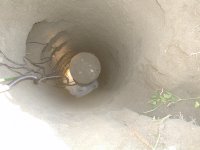New wiki for experimental hydrology
Calling all experimental hydropedologists. A vast room of poster presentations greeted thousands of scientists at the American Geophysical Union’s annual autumn meeting on Dec. 15 in San Francisco – including one announcing an “experimental hydrology Wiki” website. The wiki was created last year by Llja Tromp-van Meerveld of Simon Fraser University in Burnaby, British Columbia and Theresa Blume of the University of Potsdam in Germany. Originally designed to meet the needs of doctoral students, the wiki is now open to assist a range of environmental researchers, from hydrology to related fields in science and engineering. And hydropedology. The website is: www.experimental-hydrology.net. Soil moisture is used as a prominent, and encouraging, example.
(recycled from nscss.org)







